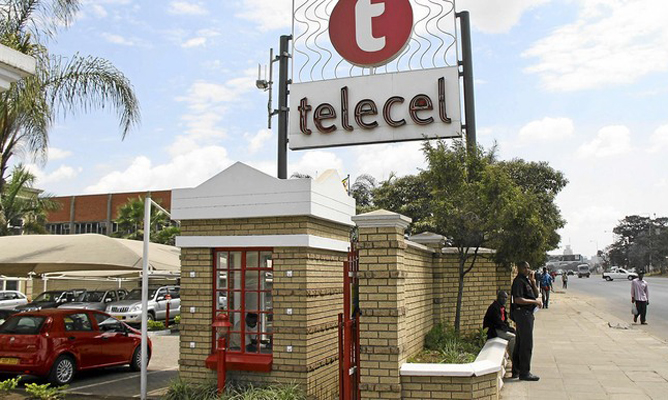It’s not every day that we get to celebrate some Telecel good news but somehow, the latest Potraz report for Q2 2024 contains such.
Before you get too excited, the positives are akin to saying a kid who got a 3% test score did better this time around with a 5% score. It’s still dismal but an improvement deserves praise, I guess.
Like I said, Telecel was once the second biggest mobile network operator and now languishes with 2.27% of subscriber market share. You could look at that as a failure of epic proportions, which it is, or you could consider that for the first time in a decade, Telecel has gained subscribers.
The kid still has an F on its report card but there’s an itty-bitty improvement.
The full picture
Mobile Subscriptions: Telecel saw a 17.68% increase in active mobile subscriptions in Q1 2024. While this growth is substantial in percentage terms, it’s important to note that Telecel holds a relatively small share of the market overall. 2.27% market share is simply too little for a market of Zimbabwe’s size.
Market Share: Despite the growth in subscriptions, Telecel’s share of the mobile voice traffic market continued to decline in Q2 2024, dropping by 0.06 percentage points to 0.07%. This shows that while Telecel is adding subscribers, they are not using voice services as heavily as customers of the competition, especially Econet.
Whichever way you look at it, getting 0.07% of voice traffic market share despite having 2.27% of the subscribers is just plain terrible.
However, you could argue that although revenue from voice is still significant, data traffic is where the future lies.
Mobile Internet/Data Traffic: Telecel experienced a significant 33.74% increase in mobile internet/data traffic during Q2 2024.
This is the largest increase among all mobile operators, suggesting that Telecel is successfully attracting data-heavy users or that their existing users are increasing their data consumption.
Anecdotally, someone was telling me how Telecel works in their neighbourhood and they prefer it to Econet because the Telecel WhatsApp bundle allows them to make WhatsApp calls. So, I kind of get how Telecel managed to grow its data traffic.
However, similar to voice traffic, Telecel still holds a very small share of the mobile data market. 0.42% to be exact. That’s still minuscule, despite rising from 0.35% in Q1.
Revenues
The Potraz report, mostly likely to protect the ailing government-linked operators, no longer shows the share of revenue. Instead just reporting the aggregate amount, which was ZWG2.88 billion in Q2, a 217% increase from Q1.
During that quarter the official exchange rate stayed below 1:14 and so that 2.88 billion was worth roughly US$206.3 million.
Telecel holds a 0.07% market share of mobile voice traffic
Telecel holds a 0.42% market share of mobile data traffic
Rough estimates of Telecel’s Revenue:
The Potraz report did not say, but judging from previous reports we can assume that data revenue is in the 40-50% range of total revenues. Let’s work with an easier-to-calculate 50%.
Voice Revenue: Telecel holds a 0.07% market share of voice traffic. Applying this to the estimated total MNO voice revenue, Telecel’s estimated voice revenue would be ZWG 1.44 billion * 0.07% = ZWG 1.008 million.
Data Revenue: Telecel’s data traffic market share in Q2 2024 was 0.42%. Using the estimated total MNO data revenue, Telecel’s estimated data revenue would be ZWG 1.44 billion * 0.42% = ZWG 6.048 million.
Total Estimated Revenue for Telecel: ZWG 1.008 million + ZWG 6.048 million = ZWG 7.056 million (or about US$504,000). Which translates to about $168,000 per month.
That is an abysmal figure, made worse by the fact that the actual figure is almost certainly significantly less than that.
That’s because the actual revenue figures for Telecel could be influenced by various factors not accounted for in these calculations, such as pricing strategies, package offerings, customer demographics, and the proportion of revenue generated from other services.
We know that Telecel is priced a little more affordably, as it should to even stand a chance. However, that means Telecel has consistently earned less from each customer than the competition for years. Econet and NetOne make more money per megabyte used by their customers.
ARPU
However, even working with the theoretical ceiling of US$168,000 per month in revenue, Telecel would be earning about US 50 cents per customer per month (ARPU). That’s way too low.
We did similar calculations back in 2022 and the indications then were that Telecel was earning 64 cents per customer per month. As you can see, that appears to have fallen to 50c in a short 2 years.
Silver linings
Telecel will not recover unless and until significant capital is injected into the company. That will not happen unless and until the company’s shareholder mess is resolved.
That may be but the longest of long shots comes from some Zim government musings that a UK company might be considering acquiring Telecel.-techzim

